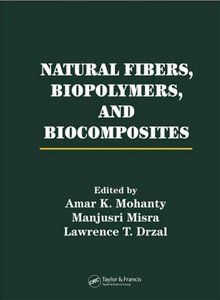Bacterial polyester-based biocomposites: a review
Hodzic, Alma (2005) Bacterial polyester-based biocomposites: a review. In: Mohanty, Amar K., Misra, Manjusri, and Drzal, Lawrence T., (eds.) Natural Fibers, Biopolymers and Biocomposites. CRC Press, Boca Raton, FL, USA, pp. 597-616.
![[img]](https://researchonline.jcu.edu.au/14421/3.hassmallThumbnailVersion/14421_Hodzic_2005_Cover.jpg)
|
Image (JPEG) (Book Cover)
- Cover Image
Download (31kB) |
|
|
PDF (Published Version)
- Published Version
Restricted to Repository staff only |
Abstract
This chapter is an overview of modern research attempts to optimize the thermomechanical properties of bacterial polyester-based natural fiber composites. The composite materials containing natural fibers and bacterial polyesters, either as individual biopolymers or biopolymer blends, suffer from low-grade fiber-matrix adhesion, pullout under low stress, and generally poor mechanical properties due to brittleness of bacterial polyesters. Furthermore, the nominal processing temperatures of 180°C and above have been found to thermally degrade the bacterial polyesters and rapidly reduce their mechanical properties. The art of improving the quality of natural fibers by chemical treatments, in conjunction with the appropriate choice of additives to enhance the fiber-matrix adhesion and to provide flexibility into the initially brittle composite, produced the biocomposites having enhanced stiffness up to 145% and reduced their processing temperature down to 168°C. The chapter discusses that the outstanding improvements of the mechanical properties of the biocomposites could be attributed to the formation of a transcrystalline region between the natural fibers and the biopolymers, which is further enchanced with the activity of molecular bonding promoted by the additives.



